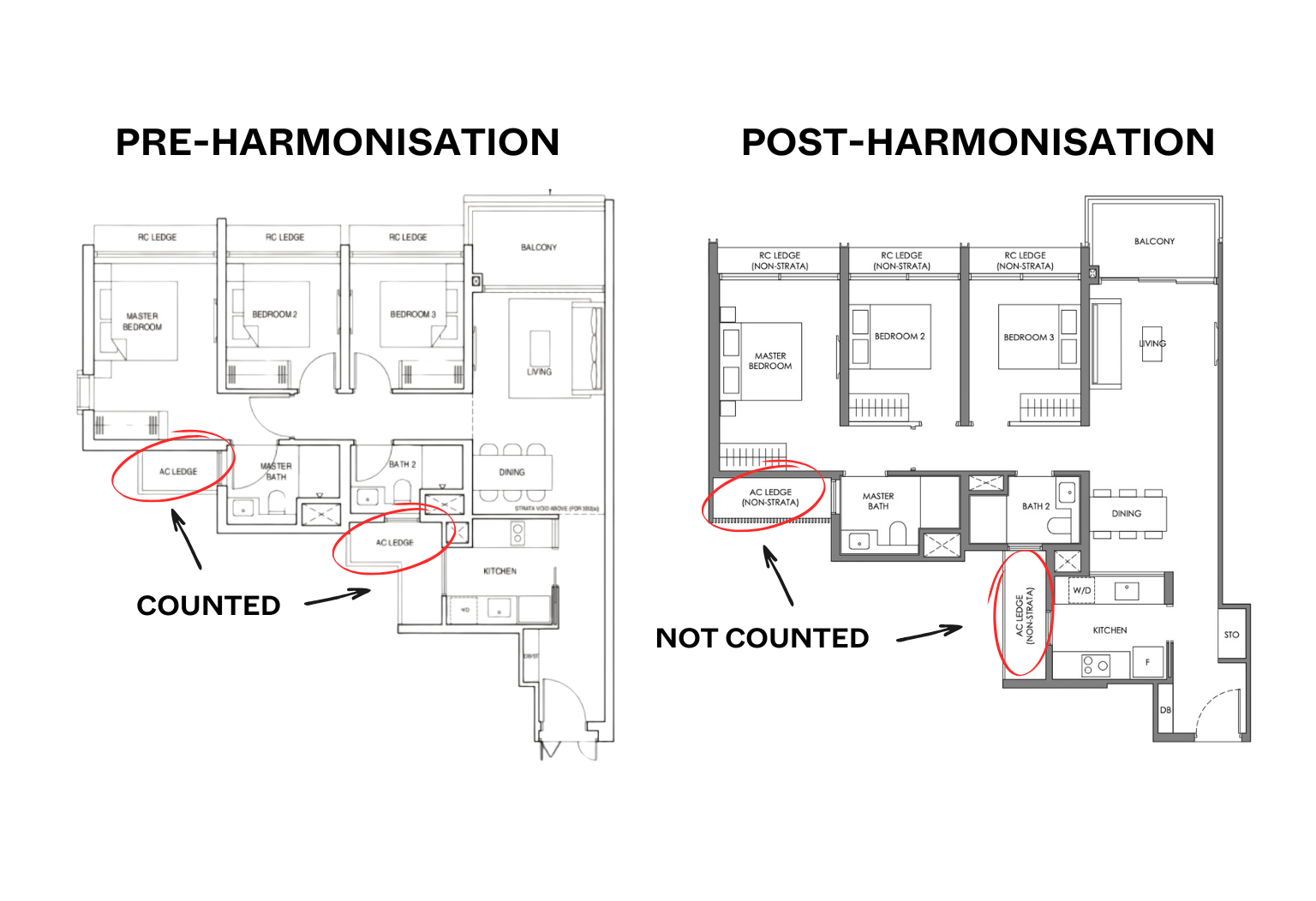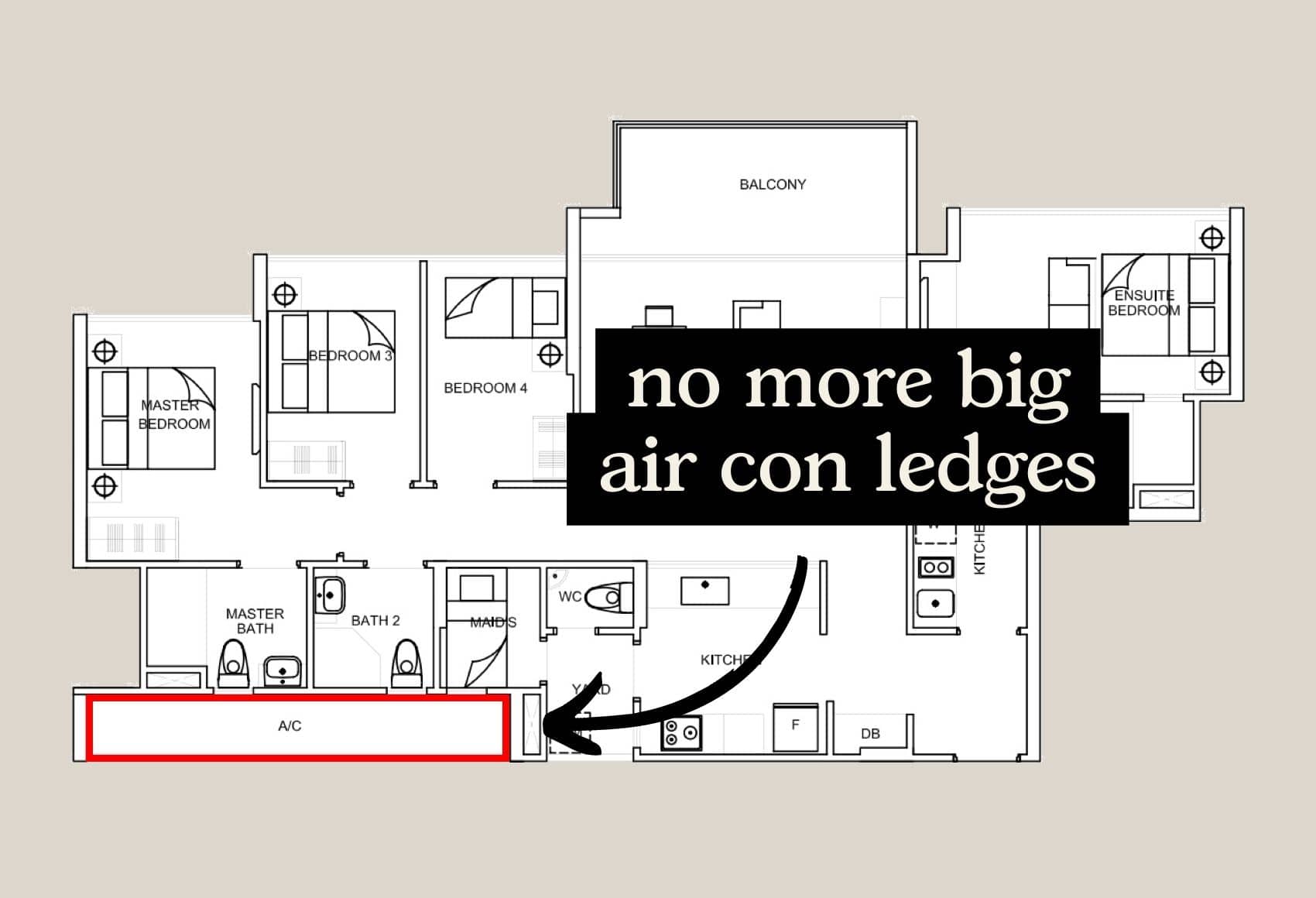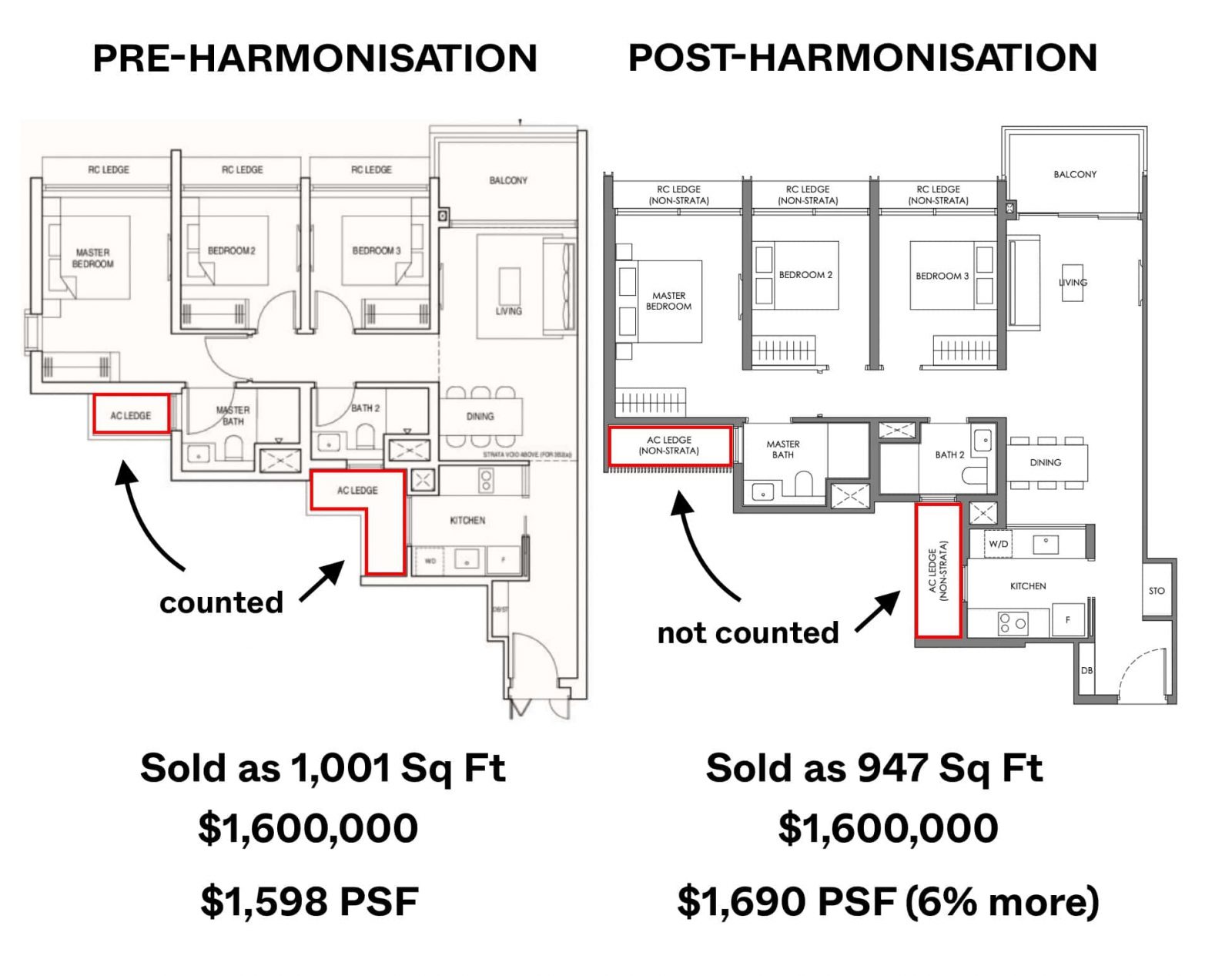Why This New Condo Rule Makes New Launch Condos More “Expensive”: GFA Harmonisation Explained

Get The Property Insights Serious Buyers Read First: Join 50,000+ readers who rely on our weekly breakdowns of Singapore’s property market.
A seasoned content strategist with over 17 years in the real estate and financial journalism sectors, Ryan has built a reputation for transforming complex industry jargon into accessible knowledge. With a track record of writing and editing for leading financial platforms and publications, Ryan's expertise has been recognised across various media outlets. His role as a former content editor for 99.co and a co-host for CNA 938's Open House programme underscores his commitment to providing valuable insights into the property market.
As we get more and more new launches with the new Gross Floor Area (GFA) harmonisation in effect, it may get more confusing for new buyers as they try to make sense of the new changes. On the surface, it looks like a simple change in technical definitions; but in reality, it could make condo floor plans more efficient; even as it has a distorting effect on price psf.
So how does this new change really work? Here’s what you need to know:
What is GFA harmonisation?
On paper, this is just a way to standardise how GFA is measured by different government agencies like URA, SLA, BCA, and so forth. Prior to this, the methods used were all different. Beyond this, however, GFA harmonisation matters because it fixed two big issues:

First, developers can no longer squeeze extra dollars out of buyers, with tricks like huge planter boxes, oversized air-con ledges, or other space-wasting features that add to the square footage they can sell.
Second, strata void space – which is measured vertically from for to ceiling – is gone; a move that might revive the popularity of high-ceiling units, as buyers no longer feel they need to pay for “empty air.”
How it’s already taken effect
Lentor Mansion has the honour of being the first new launch to follow the GFA harmonisation rules. You can already see how it’s affected the floor plans, in the linked review: notice that all the usual shenanigans, like big bay windows, are gone (while some units have balconies, they’re not monstrously oversized). We previously showed how this matters in terms of price comparison:
Even if the actual square footage of the unit is smaller, you might be getting more space than you’d find at, say, The Line or these two other condos, because every square foot is actual, usable space. There’s no point having an extra 100 sq. ft. if it’s just taken up by protruding bay window ledges.
As we’ve already seen, a common sales pitch is how much more value for money you’re getting, between recent launches and the older 2000s-era condos. Now, we will see more sales pitches highlighting why a new condo with the GFA harmonisation is better than even the recent new condos on the market. One example would be the about-to-launch Nava Grove (that has the new GFA harmonisation in effect), as compared to Pinetree Hill next door.
More from Stacked
2022 Year-End Review Of The Singapore Property Market: Key Numbers And Trends You Need To Know
At the end of 2021, we expressed hopes that 2022 would see a return to normalcy. We shouldn’t have done…
A look at how GFA harmonisation is affecting pricing
Due to the changes made, pricing in the current market can get a bit distorted. You’ll find the older and less efficient layouts will end up looking much cheaper, although they’re not. Let’s consider a theoretical three-bedder condo unit:

If this condo were launched pre-harmonisation, it might be sold as 1,001 sq. ft., inclusive of features like air-con ledges, void space, etc. The price tag is $1.6 million, so that comes to about $1,598 psf.
Next, let’s look at a similar unit, but post-harmonisation. Once we deduct the air-con ledge, void spaces, etc., the actual square footage drops to 947 sq. ft. The price is the same, at $1.6 million. But this would come to about $1,690 psf, which appears to be much more expensive.
This can have quite an impact on how buyers perceive new launches. It is, for instance, a norm for new launches to be priced at $2,200+ psf these days. However, if you factor in the inefficiencies of pre-harmonisation projects, the price discrepancy might be a little less shocking.
There’s also some concern over older resale projects, where the square footage data hasn’t been properly updated.
It’s only been around two years, and there’s quite a number of resale condos out there. Some of the projects may still be using older data. For example, a high-ceiling unit, which was built in 2010, may still be marketed with the strata void space factored in. This may not be out of any intent to cheat you; the seller may just be following the old specifications from when the unit was bought.
So again, when comparing between pre and post-harmonisation units, bear in mind the pre-harmonisation ones might look deceptively cheaper.
For these reasons, we’d suggest you look beyond simplified comparisons of price psf: pay more attention to the floor plan and quantum, to get a sense of actual value. This is a good idea in general anyway, as certain unit variations – such as dual-key layouts – also cause distortions in price on a per-square-foot basis.
For more updates on the Singapore property market, follow us on Stacked. If you’d like to get in touch for a more in-depth consultation, you can do so here.
Ryan J. Ong
A seasoned content strategist with over 17 years in the real estate and financial journalism sectors, Ryan has built a reputation for transforming complex industry jargon into accessible knowledge. With a track record of writing and editing for leading financial platforms and publications, Ryan's expertise has been recognised across various media outlets. His role as a former content editor for 99.co and a co-host for CNA 938's Open House programme underscores his commitment to providing valuable insights into the property market.Read next from Singapore Property News

Singapore Property News Why More Land Doesn’t Automatically Fix Housing In Singapore

Singapore Property News Lentor’s First Condo Is Complete — The Early Profits May Surprise You

Singapore Property News $281.2M in Singapore Shophouse Deals in 2H2025 — But That Number Doesn’t Tell the Full Story

Singapore Property News CapitaLand–UOL’s $1.5 Billion Hougang Central Bid May Put Future Prices Above $2,500 PSF
Latest Posts

Property Market Commentary 4 Key Trends Reshaping Singapore’s New Launch Condo Market In 2026

Homeowner Stories What I Only Learned After My First Year Of Homeownership In Singapore

On The Market Here Are The Cheapest 4-Room HDB Flats in Central Singapore You Can Still Buy From $490K

Editor's Pick Should We Buy An Old 99-Year Leasehold Condo To Live In: Will It’s Value Fall When The Lease Runs Out?

Pro How A Once “Ulu” Condo Launched In 1997 Became A Top Performer

Editor's Pick I Reviewed A New Launch 4-Bedroom Penthouse At Beauty World

Property Market Commentary When Renting In Singapore Is The Smarter Move — And Buying Can Wait

Editor's Pick Why Singaporean Families Are Looking At This Landed Enclave From Around $4M

Editor's Pick A Wave Of New HDB Resale Supply Is Coming In 2026: Here’s Where To Find Them

Property Advice We Own A $800K 1-Bedder And A $1.1M 3-Bedder: Is It Possible To Upgrade To A 4-Bedder Condo?

On The Market These Are Some Of The Cheapest 5-Room HDB Flats Left In Central Singapore

Pro This 698-Unit Ang Mo Kio Condo Launched At The Wrong Time — And Still Outperformed Peers

Property Market Commentary 5 Key Features Buyers Should Expect in 2026 New Launch Condos

Editor's Pick What “Lucky” Singaporean Homebuyers Used To Get Away With — That You Can’t Today

Property Investment Insights These Resale Condos In Singapore Were The Top Performers In 2025 — And Not All Were Obvious Winners


